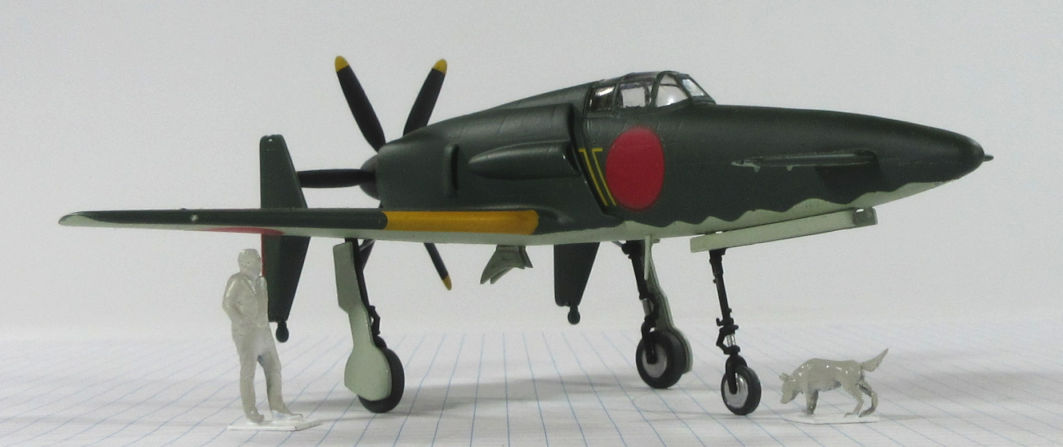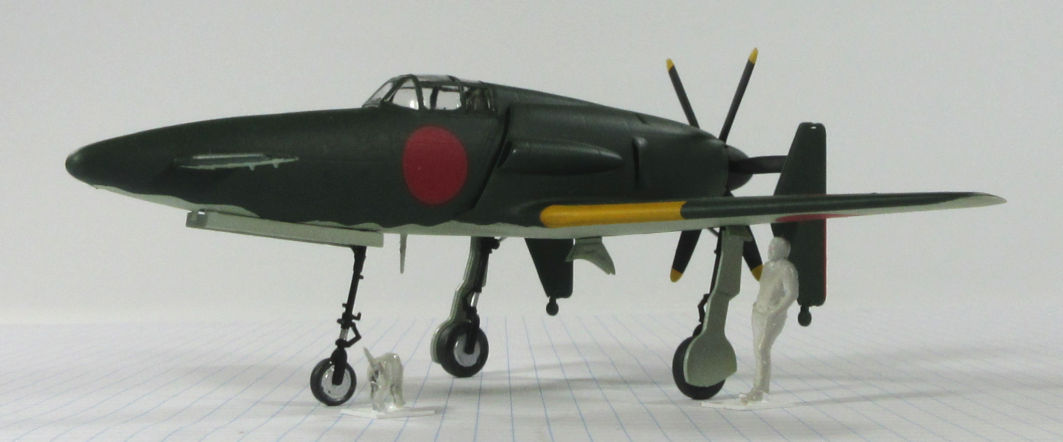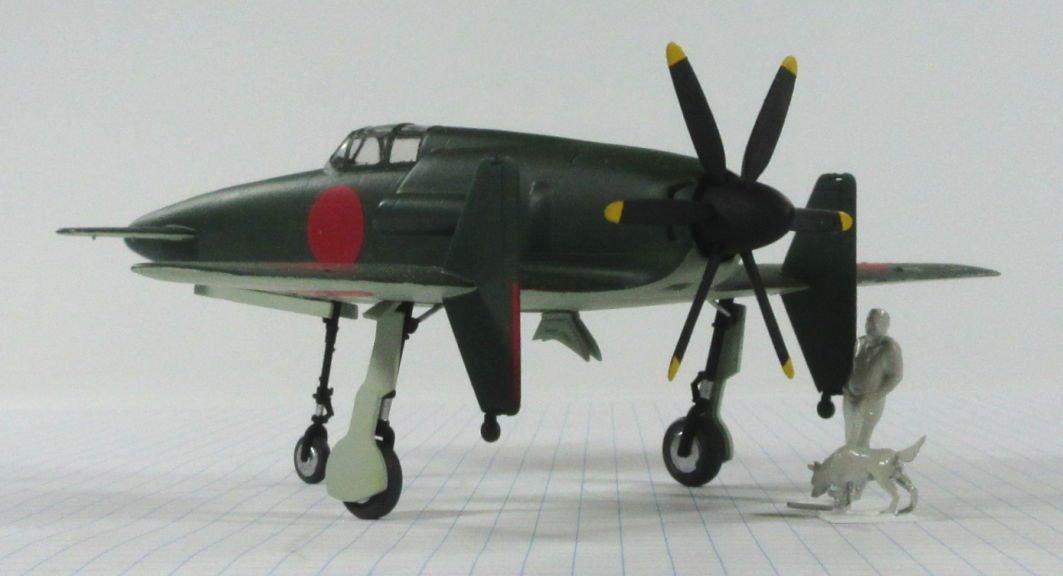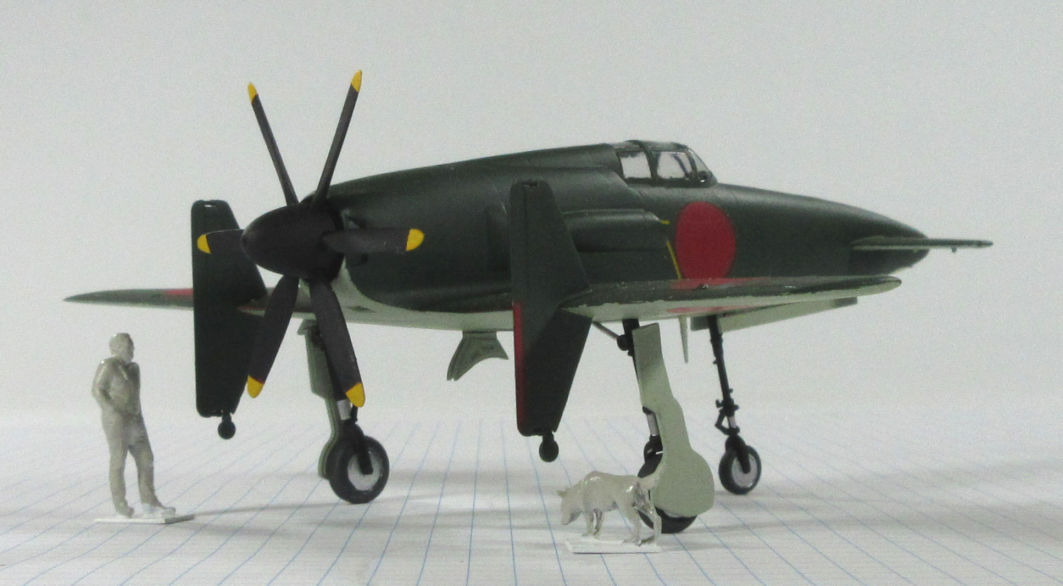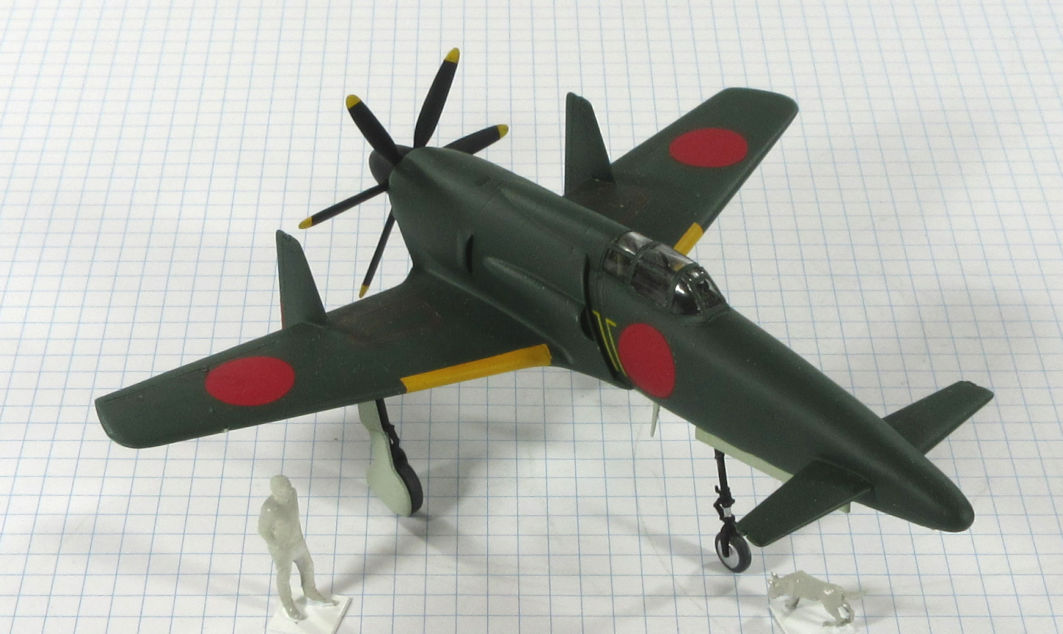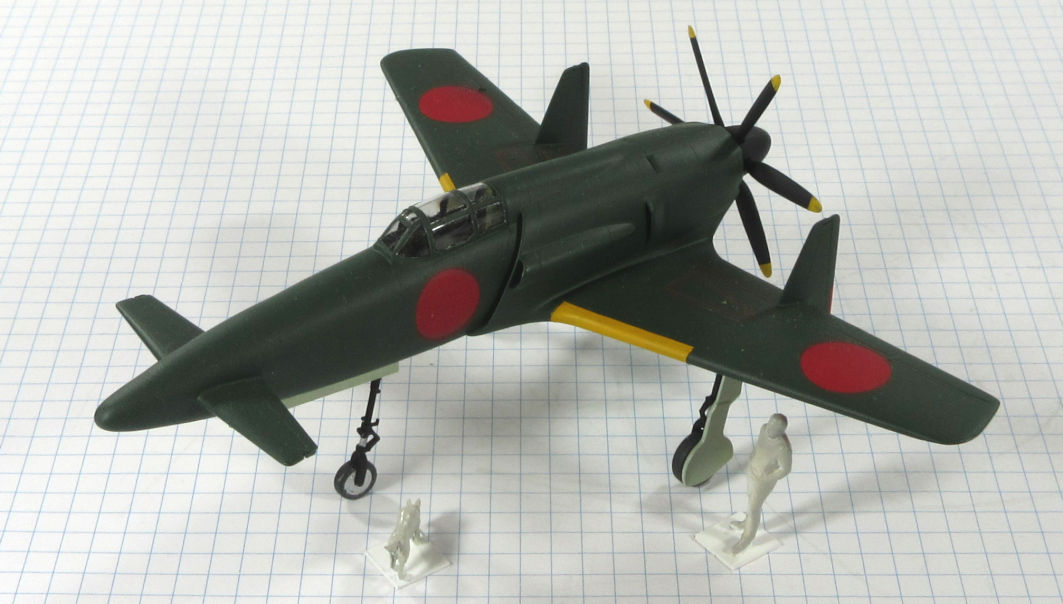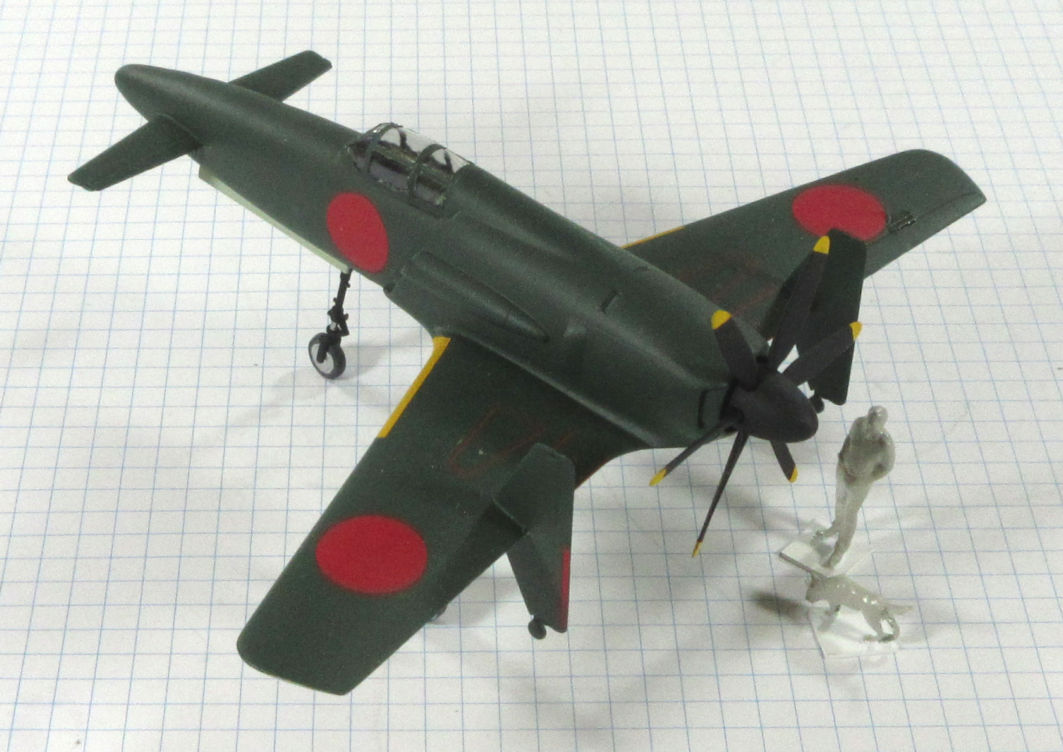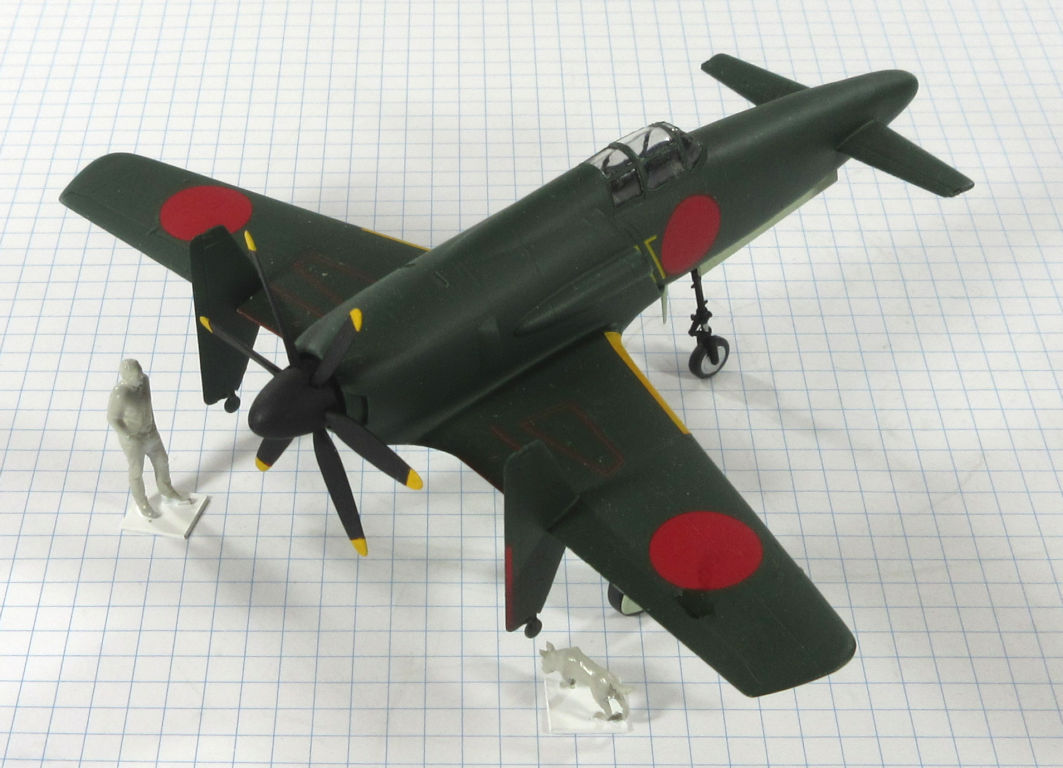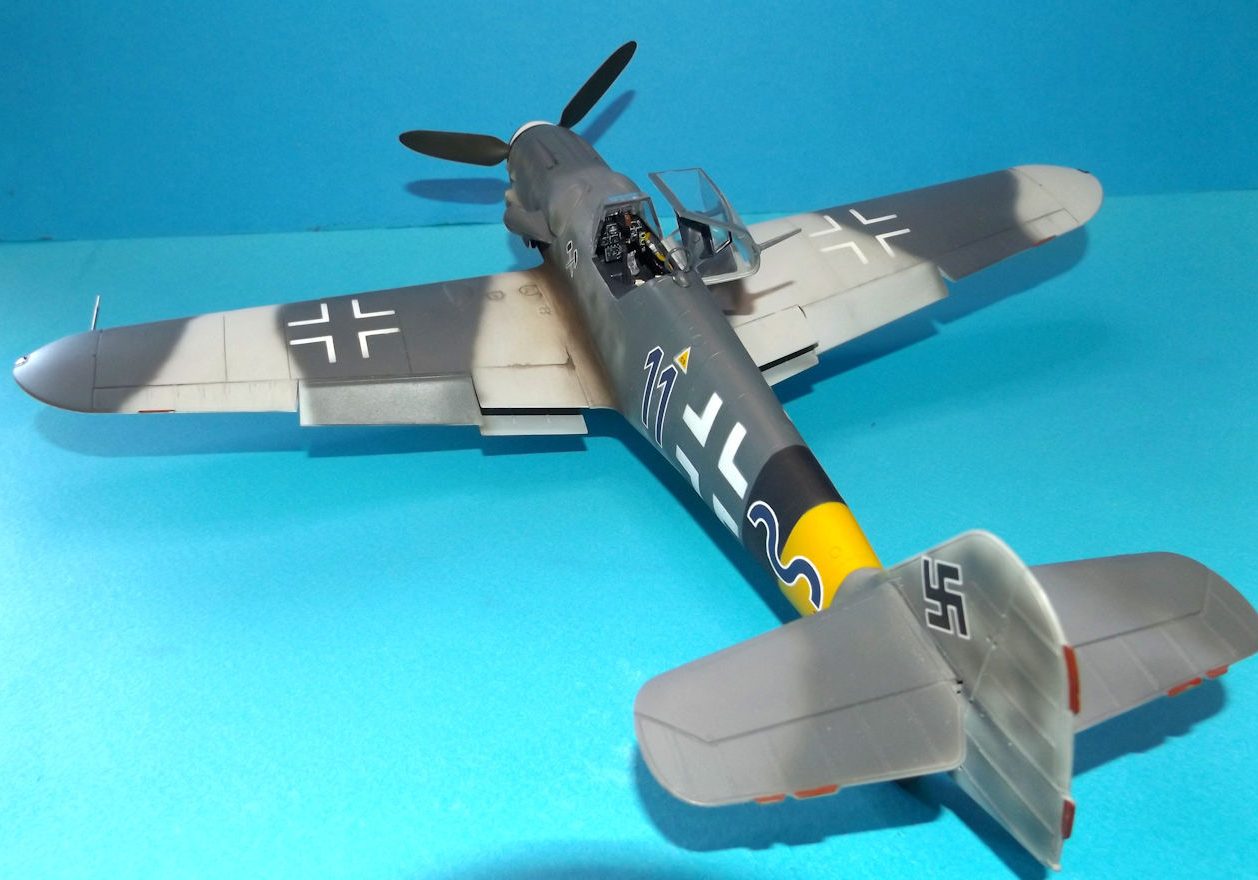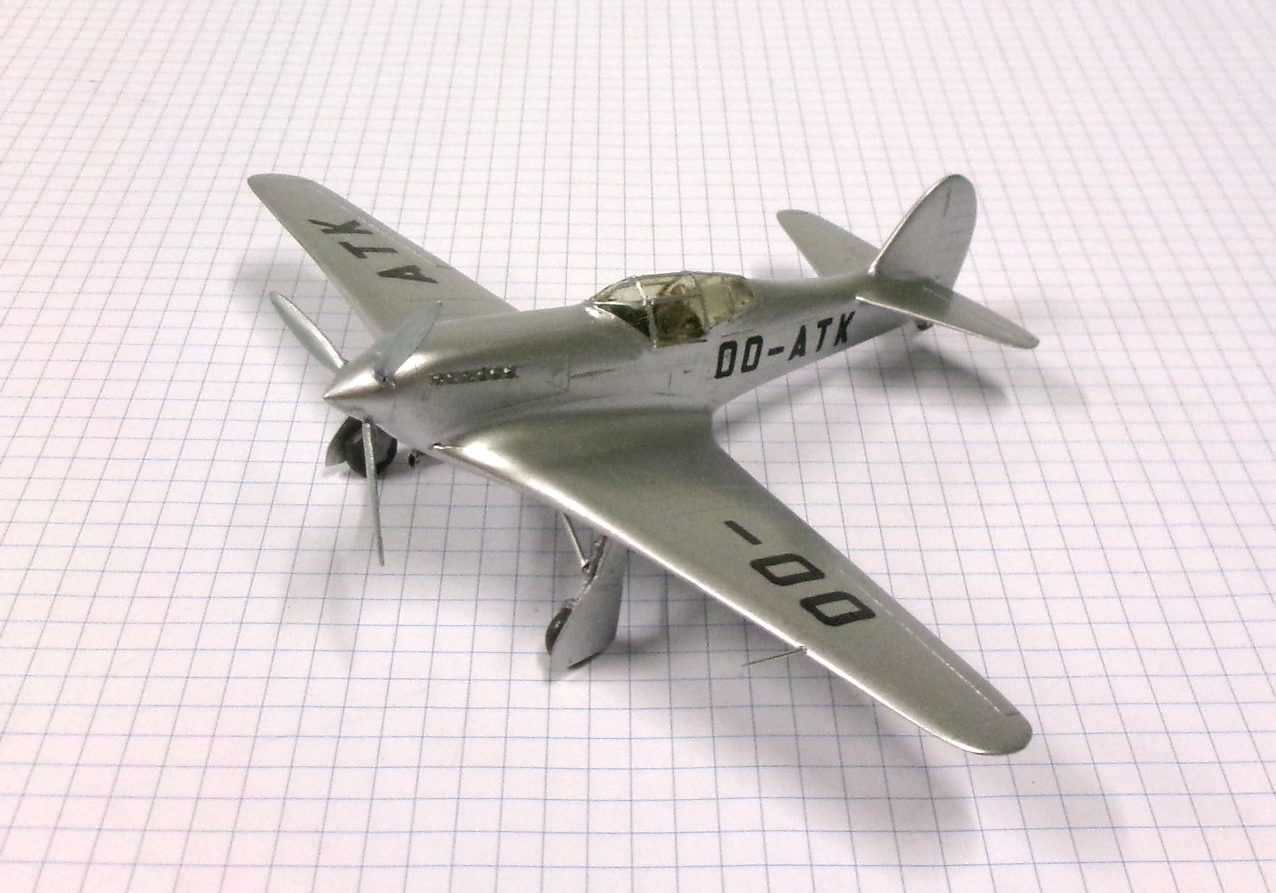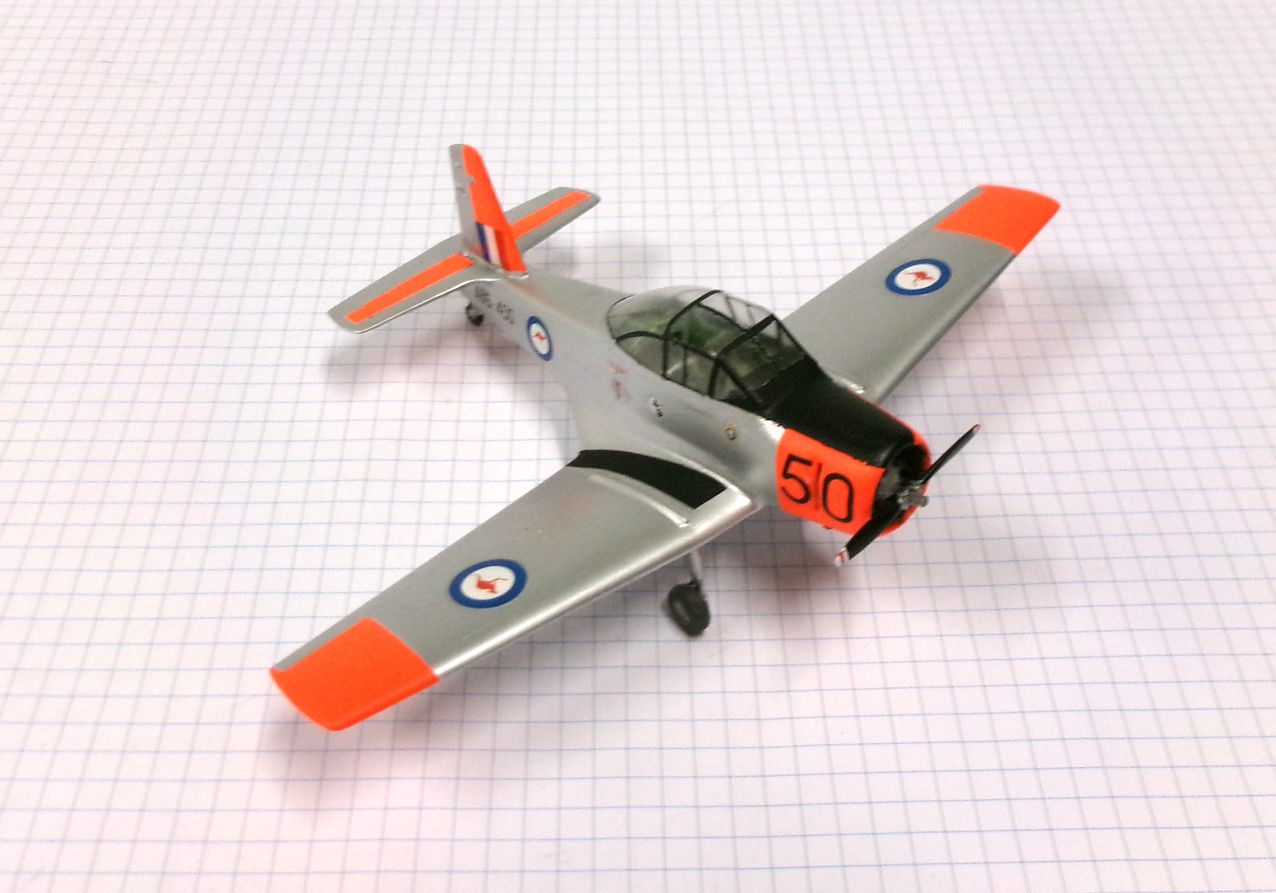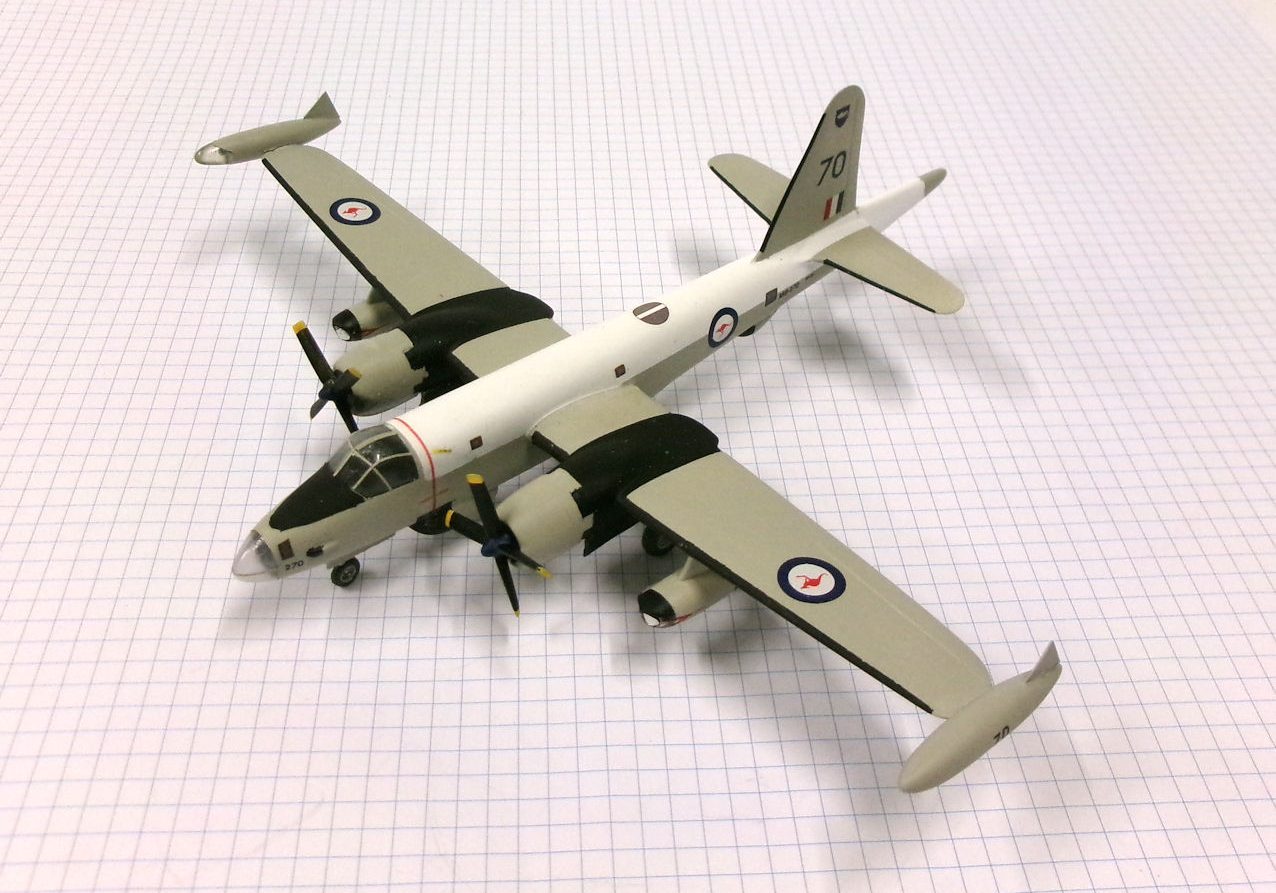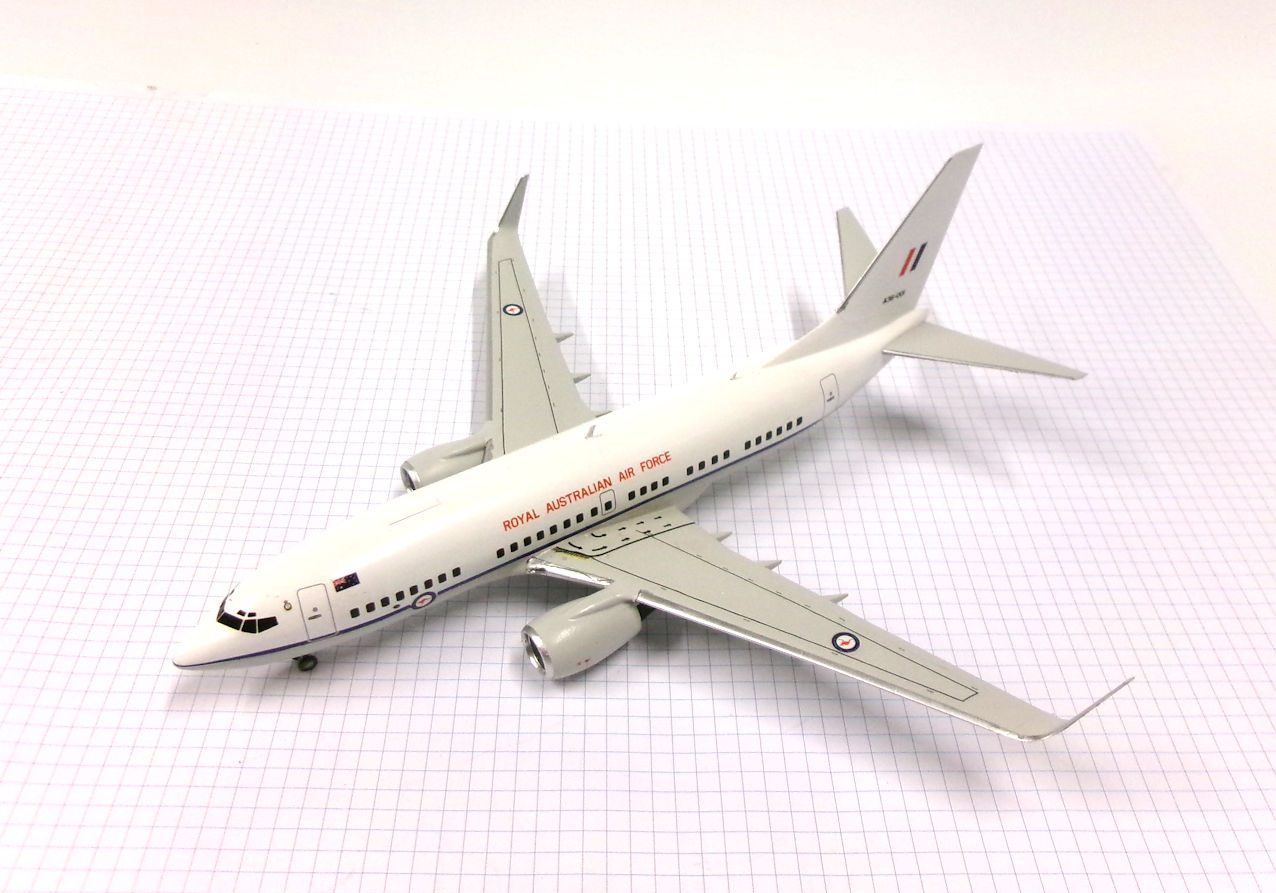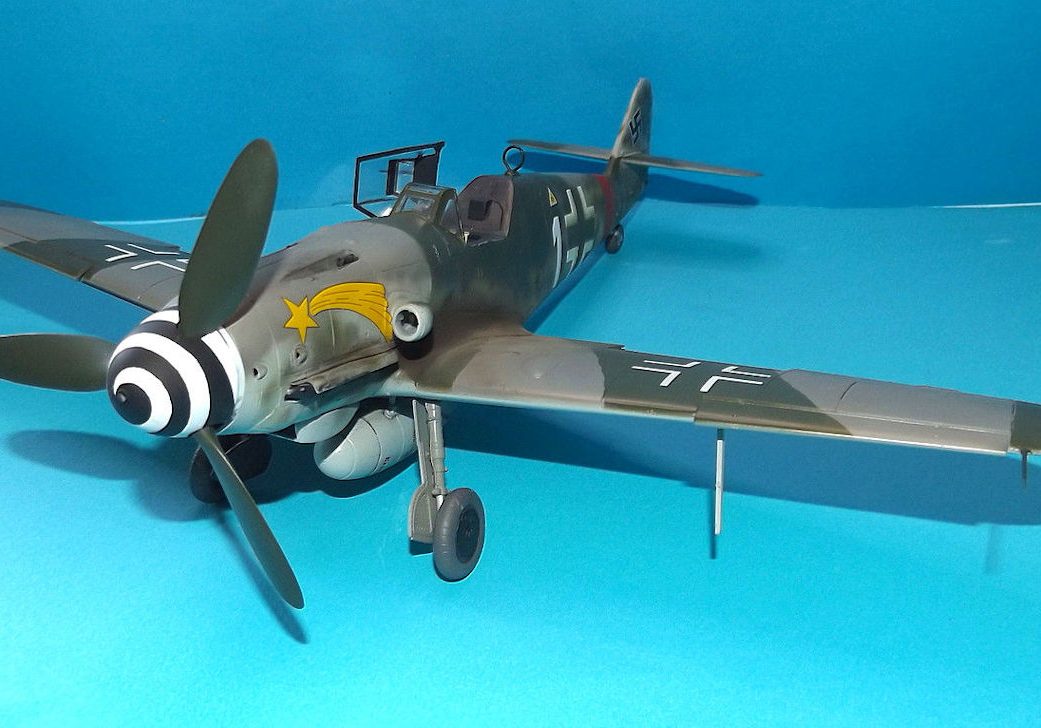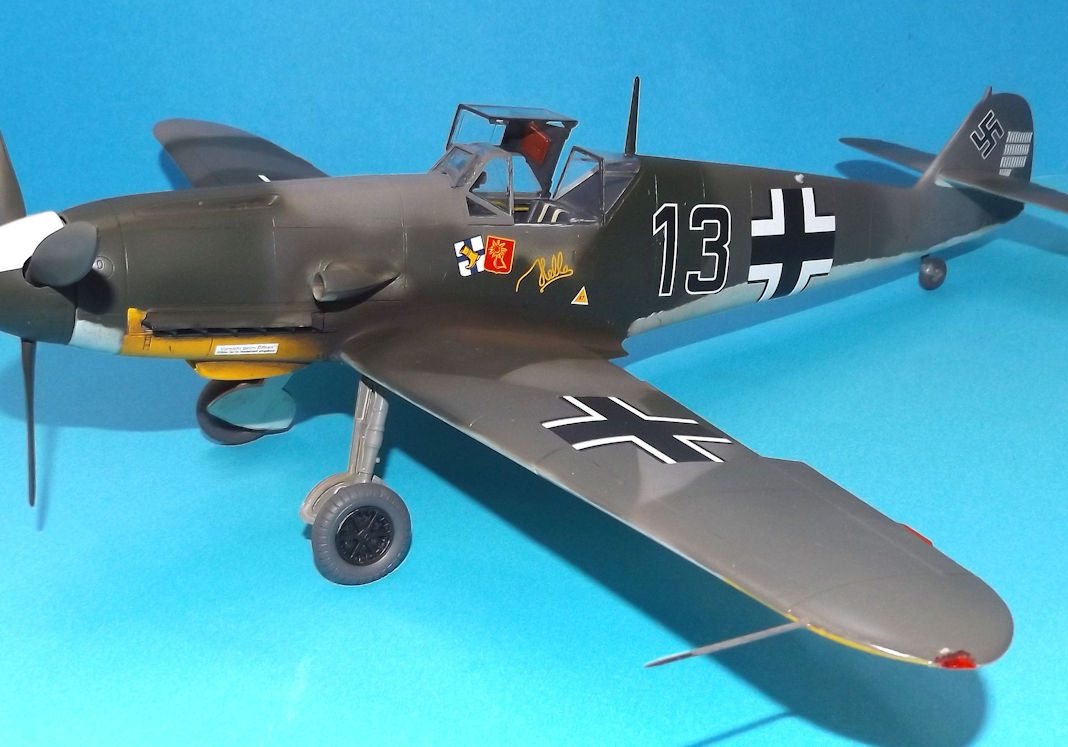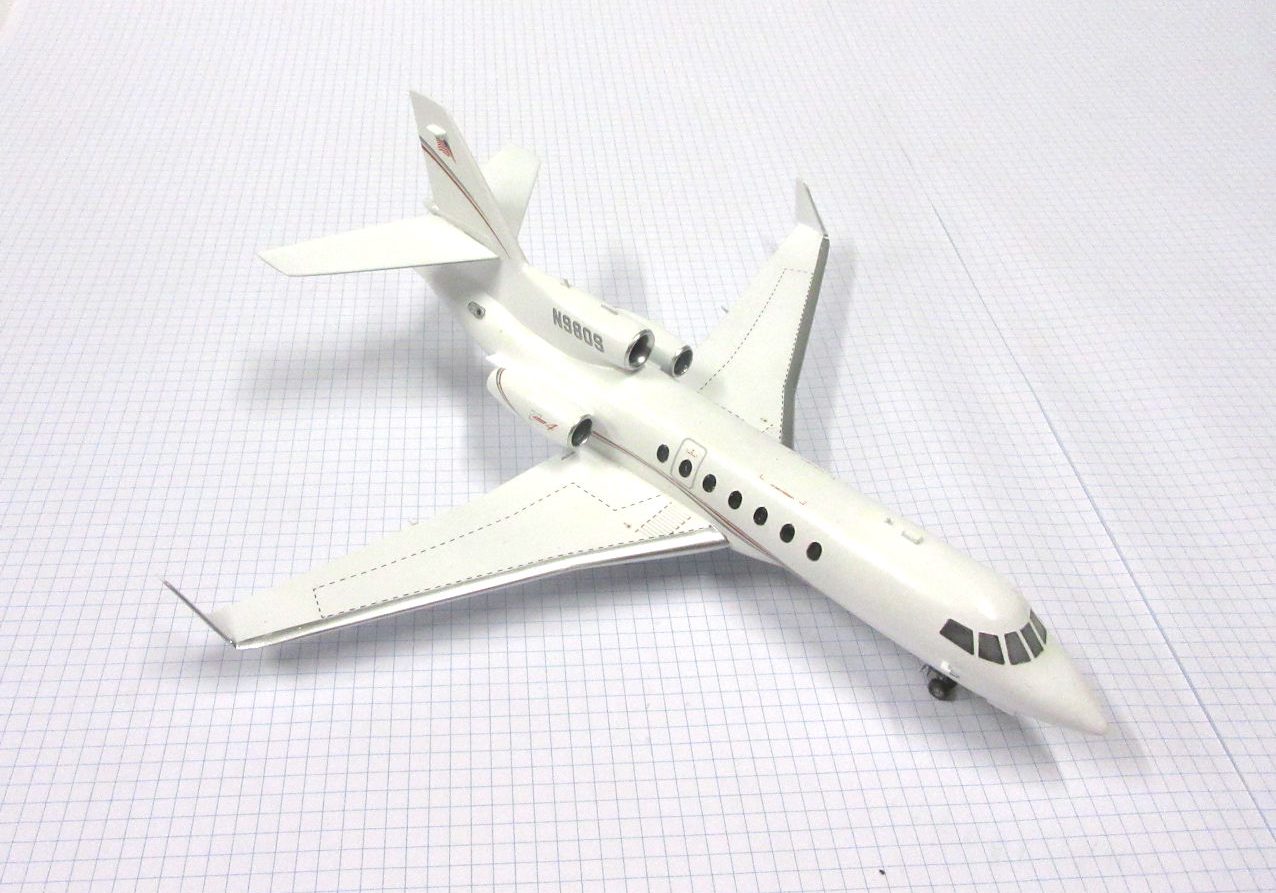History
The Kyushu J7W1 was a potentially formidable interceptor developed in Japan during World War II. However it was developed too late to take any active part in the war with only the first prototype flying.
The J7W was one of the few canard aeroplanes developed during World War II.
The concept was tested on a glider that flew in late 1943 and design of the interceptor also began that year.
Construction began in June 1944 and the first prototype was test flown on 3 August 1945.
Plans for mass production would have seen over 1000 manufactured between April 1946 and March 1947 but when the war ended only the first prototype had flown.
Also in the planning stages was a J7W2 version to be powered by a turbojet engine.
This model represents the prototype.
Hasegawa 1/72 kit completed by Leigh Edmonds in July 1997.
